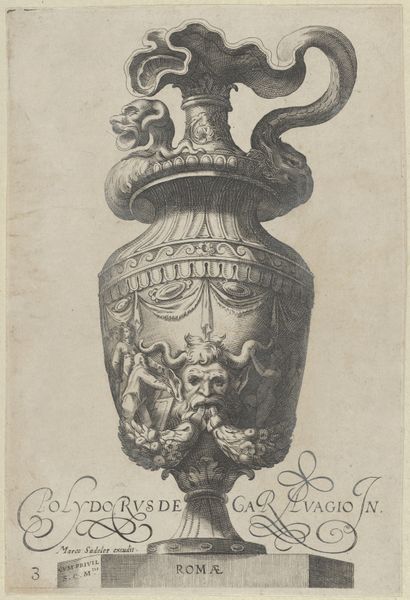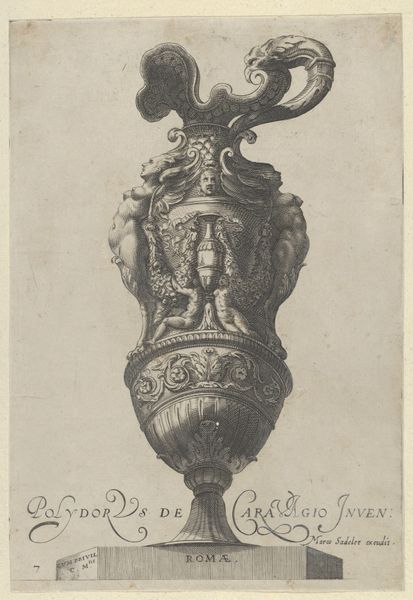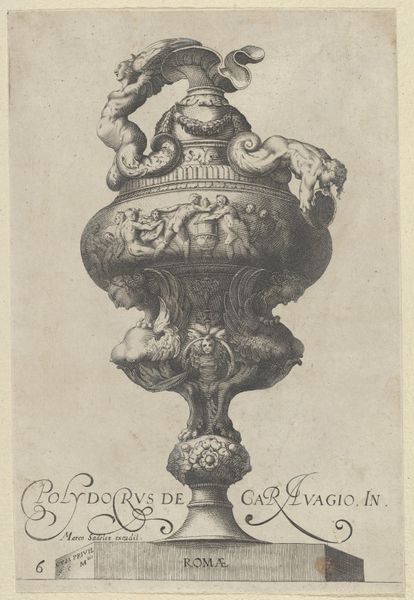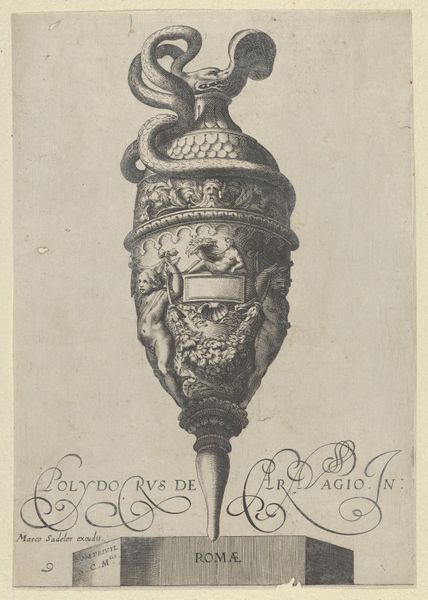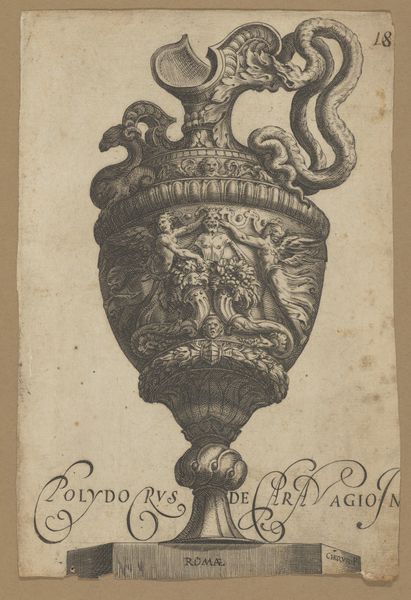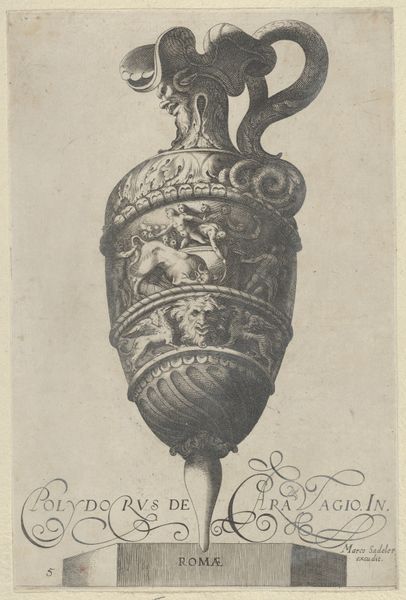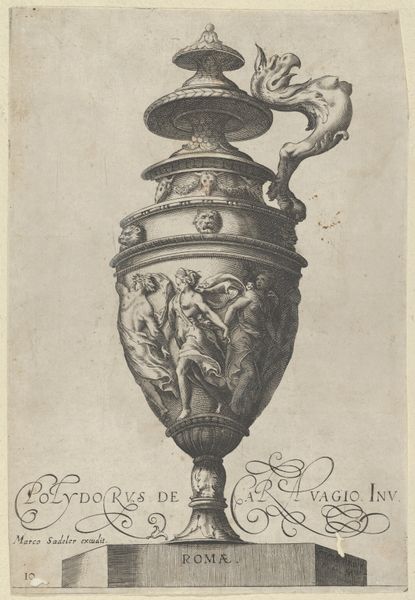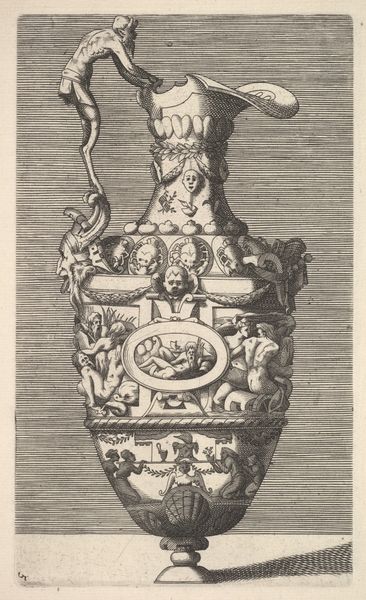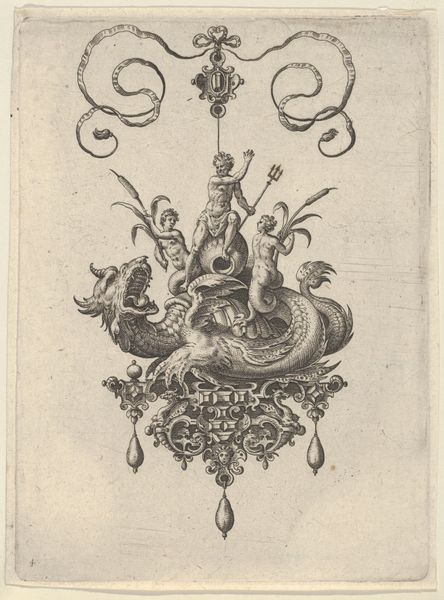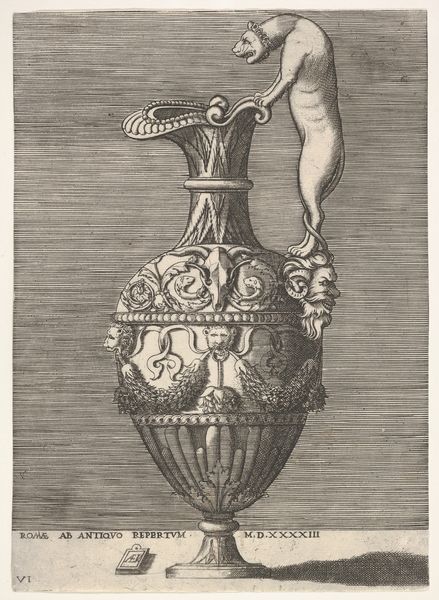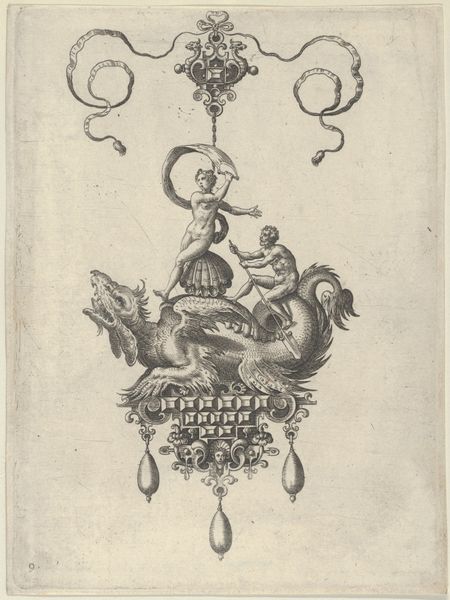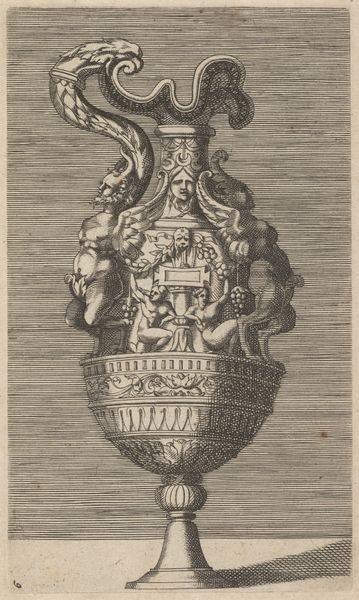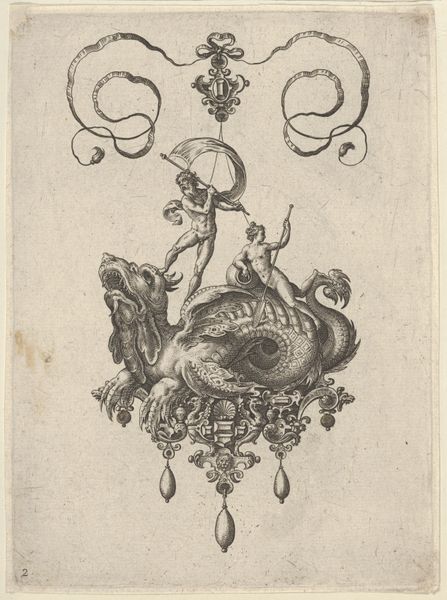
Plate 4: Vase or Ewer with a Frieze containing mermaids and centaurs, and below a lion's head with garlands and ribbons, from Antique Vases (‘Vasa a Polydoro Caravagino’) 1605
0:00
0:00
drawing, print, engraving
#
drawing
#
allegory
# print
#
form
#
geometric
#
line
#
italian-renaissance
#
engraving
Dimensions: Sheet: 9 1/4 × 6 1/4 in. (23.5 × 15.8 cm)
Copyright: Public Domain
This print, made by Aegidius Sadeler II around the turn of the 17th century, depicts a vase using the intaglio technique. This process involves engraving an image into a metal plate, inking the recesses, and then pressing paper against the plate with considerable force. Notice how the incised lines create an illusion of three-dimensionality, mimicking the textures and forms of the vase. The varying depth and density of the lines give the vase its weight and volume, making the metal appear almost palpable. The vase is adorned with mermaids, centaurs, garlands, and ribbons, all rendered with intricate detail. The intaglio process itself is labor-intensive, requiring skilled craftsmanship and time. In a sense, the print immortalizes not just the vase but also the labor involved in its creation and reproduction. It prompts us to consider the cultural value placed on craftsmanship and artistry during the Renaissance, and how these values intersect with the modes of production and consumption of luxury goods.
Comments
No comments
Be the first to comment and join the conversation on the ultimate creative platform.
